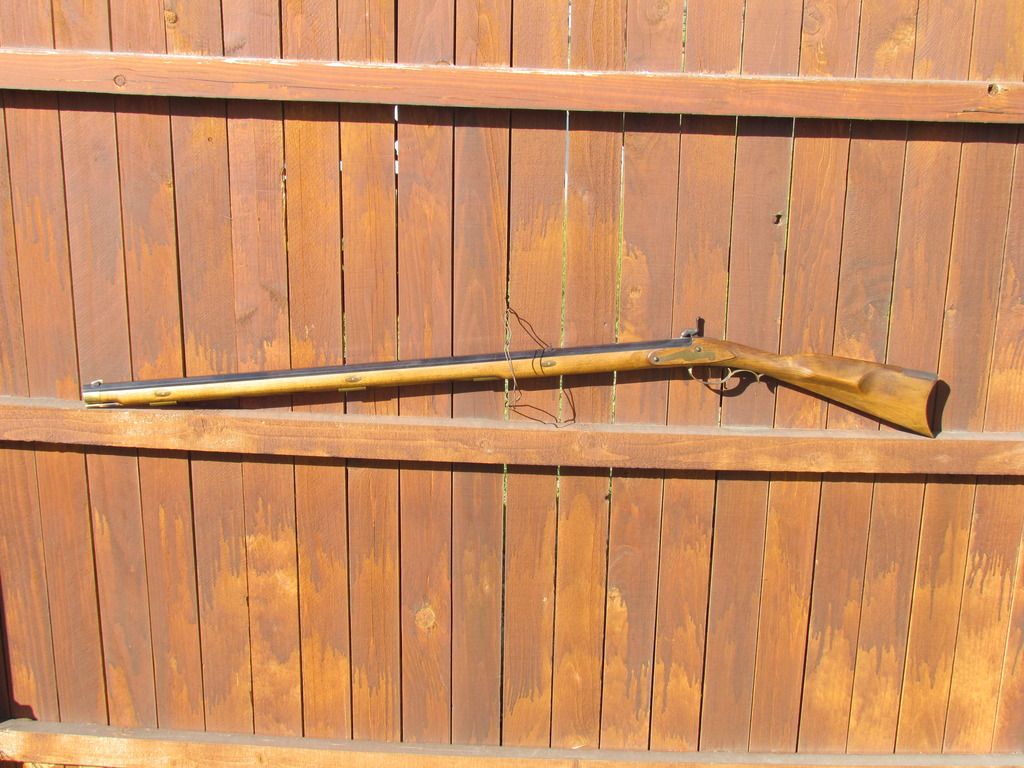- Joined
- Feb 18, 2015
- Messages
- 1,703
- Reaction score
- 81
I got my hands on a percussion Numrich Arms "The Minuteman". I gave the high bid on it at "Get Broker" dot com, and the seller had no idea what caliber it was. I thought it might be a .31 when looking at the photo he provided of the muzzle, but when it arrived I was happy to find out it was the larger caliber. I used to have a .36 Numrich Arms Hopkins and Allen underhammer that was a seriously accurate rifle, so I am hoping it holds true for this one as well.
I haven't shot it yet, as I am waiting for some .340 balls from TOTW. I did give it a thorough going over, though. When I first looked down the barrel I could see some irregular brown stuff in the grooves and I thought it might be rust, but that all wiped out on the first pass with a patch. I guess it was either grease or hardened oil. I scrubbed on the barrel for a while and I can't see any pits or bulges, just a nice mirror smooth barrel with sharp riflings. I guess if it was ever fired it was cleaned well before being stuck in the closet. There were some small spots of rust colored stain on the outside of the barrel, but no pitting around the muzzle or nipple as might be expected on an older gun, and I had no problem getting the nipple, drum, and breech plug to unscrew. They were rust free, as well.
The lock looks like a toy, with a strange combination of springs, neither of which look like they belong in a real gun, but it seems to work. It has a very weak spring when you pull to half-cock, but gets much tighter as you reach full-cock. The single, no-set trigger pull was terrible with a lot of creep and a heavy let off. I worked on it for a while and got rid of the creep, but it is still too heavy for my preference.
I can't wait to shoot it though.
I haven't shot it yet, as I am waiting for some .340 balls from TOTW. I did give it a thorough going over, though. When I first looked down the barrel I could see some irregular brown stuff in the grooves and I thought it might be rust, but that all wiped out on the first pass with a patch. I guess it was either grease or hardened oil. I scrubbed on the barrel for a while and I can't see any pits or bulges, just a nice mirror smooth barrel with sharp riflings. I guess if it was ever fired it was cleaned well before being stuck in the closet. There were some small spots of rust colored stain on the outside of the barrel, but no pitting around the muzzle or nipple as might be expected on an older gun, and I had no problem getting the nipple, drum, and breech plug to unscrew. They were rust free, as well.
The lock looks like a toy, with a strange combination of springs, neither of which look like they belong in a real gun, but it seems to work. It has a very weak spring when you pull to half-cock, but gets much tighter as you reach full-cock. The single, no-set trigger pull was terrible with a lot of creep and a heavy let off. I worked on it for a while and got rid of the creep, but it is still too heavy for my preference.
I can't wait to shoot it though.










